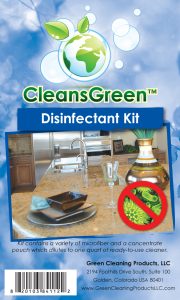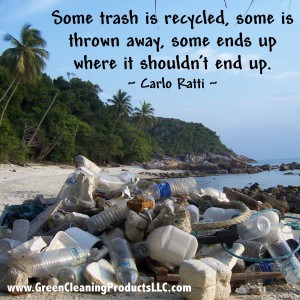 Green cleaning products means different things to different people. For sustainability, waste is a key factor. The growing mountain of wipes in landfills and sewers must be avoided. Wipes – They are everywhere and seemingly used for everything. Baby wipes, Disinfecting wipes, Facial wipes, Wet wipes, Flushable wipes, Cleaning wipes, Hand wipes, Furniture wipes, Stain Remover wipes, Handy wipes, Screen wipes, even Kitty wipes!
Green cleaning products means different things to different people. For sustainability, waste is a key factor. The growing mountain of wipes in landfills and sewers must be avoided. Wipes – They are everywhere and seemingly used for everything. Baby wipes, Disinfecting wipes, Facial wipes, Wet wipes, Flushable wipes, Cleaning wipes, Hand wipes, Furniture wipes, Stain Remover wipes, Handy wipes, Screen wipes, even Kitty wipes!
Additionally it is the big companies that produce them for our convenience, including Clorox, Huggies, Wet Ones, Cottonelle, Pampers, Lysol, Johnson’s, Purell and even Seventh Generation.
6 Reasons Why Not to Use Wipes
- Loading up the landfills
- Gunk up the sewer system
- Killing aquatic animals
- High Direct costs
- Hidden Indirect costs
- They are plastic … and never go away
How many wipes do you use daily? Just think if you only use two disinfecting wipes a day that alone is 60 wipes a month! Multiply that by the different types of wipes available for you to use and the number of people using them on a regular basis. The number becomes MUCH bigger than you realize. And it is growing astronomically, as is illustrated by these three examples:
- Marine Conservation Society’s (MCS) annual beach clean-up in the UK released that they found the number of wipes more than doubled between 2013 and 2014! Thirty-five of the non-biodegradable cleaning cloths and disinfecting wipes were found for every kilometer of beach.
- The New York Times reported New York City alone spent more than $18 million in the past five years on wipe-related equipment problems as waste water pumps clog and gears falter.
- Market research, cited in a Bloomberg News article last year, suggested that from 2008 to 2013, sales of the moist flushable wipes had grown 23 percent to $367 million.
- Are Clorox wipes flushable? Dr. Mehmet Oz demonstrated how, despite marketing otherwise, they do NOT break down when he retracted his support of them.
Disinfecting Wipes Damage the Environment
Disposable wipes, whether biodegradable, flushable, or not, cause grave consequences on our environment. For instance:
- Wipes, which usually contain plastic fibres, pose a danger to animals that mistake plastic bags and wipes for their natural jellyfish prey.
- Wipes not only impact the sewer systems, but the resulting blockages can also affect waterways by causing raw sewage to overflow into rivers and the ocean.
- Are wet wipes recyclable? While we strive to reduce the amount going to the landfill and increase the amount we recycle, wipes are not recyclable and increasing the amount that goes to the landfill … and just like plastic, it does not break down.
If you are wondering how long do baby wipes take to decompose? There are a myriad of articles that talk about plastic contained in the wipes in addition to harmful chemicals that leach out when they are decomposing. You cannot compost baby wipes and the like!
Wipes Cost
There are direct and indirect costs associated with using wipes. A couple are:
- Direct Cost: The average container of disinfecting wipes contains only about 35 wipes. The saying that guides proper use is “Use It & Lose It”. Another words to avoid cross contamination and causing an even greater germ situation, you should use each wipe once, for a small surface area, and for only a single application. For obvious reasons, when used properly, this becomes very expensive.
- Indirect Cost: With increased costs to remove the non-disintegrated wipes and the repair the gummed up gears of the plumbing networks only leads to increased costs and fees to us, the waste management and sewer system customers.
Disinfecting wipes are a convenience, but with a high price. We can save money (and our planet) by finding alternative strategies while still achieving the same disinfectant results with green cleaning. ![]()

For this reason a solution with a reusable wipe, such as the Disinfectant Kit by CleansGreen® offered by Green Cleaning Products LLC (available on Amazon) is the way to go!
With the thick, luxury, large (16 inch by 16 inch) color coded microfiber cloth, you can easily fold it twice for EIGHT separate, clean and no contaminated surfaces to work with.
It is reusable, just wash it and start over. So simple and so easy. With high quality microfiber the cloth can be laundered hundreds of times and remain just as effective as on its first day of use.

Leave a Reply